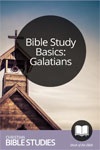Seeming inconsistencies can be noted when Scripture contains variant accounts of the same event. Such different reports can be found, for example, between the narratives in Samuel, Kings, and Chronicles, and between the accounts of the Synoptic Gospels. The different narratives provide unique emphases and details, and sometimes these divergences are difficult to reconcile, appearing to be inconsistent.
For example, Matthew and Mark recount the initial events of holy week in a different manner. According to Matthew 21:1-22, Jesus triumphantly entered into Jerusalem, cleansed the temple, and left for Bethany. The next morning he cursed a fig tree, resulting in its immediate withering and prompting the disciples to question how such quick shriveling occurred. But according to Mark 11:1-26, Jesus triumphantly entered into Jerusalem, visited the temple, then left for Bethany. The next morning he cursed a fig tree while the disciples were listening. Returning to Jerusalem, Jesus cleansed the temple, then left the city. The next morning they saw the fig tree withered, prompting Peter to recall its cursing.
What can account for these divergences? I offer several possible explanations, with illustrations:
- A summary may differ from a detailed account. As an illustration, note the two narratives of the healing of the centurion's slave. Matthew's account (8:5-13) is a summary of the event, focusing on the interaction between Jesus and the centurion. Luke (7:1-10) provides a detailed account including the particulars of the Jewish elders' intervention and the conveying of the centurion's message by his friends. For Matthew's purpose, a summary was sufficient, but Luke included details according to his purpose.
- Details may differ because of the differing perspectives from which the narratives are made. Consider the Sermon on the Mount. From Matthew's perspective, Jesus delivered his sermon "up on a mountainside" (Matt. 5:1). From Luke's perspective, Jesus delivered his sermon "on a level place" or "plateau" in the mountainside. Mathew and Luke express different perspectives on the same location.
- An account relating only one part of an event may differ significantly from another account relating another part of that event. Take the example of Judas' death. According to Matthew (27:1-10), Judas hanged himself, whereas Luke (Acts 1:18-19; ESV) notes that "falling headlong he burst open in the middle and all his bowels gushed out." Let's think of the actual death of Judas as a complete jigsaw puzzle and the details of the two accounts as pieces of the puzzle. The Matthean pieces provide the left side of the puzzle while the Lucan pieces supply the right side. We lack the pieces in the middle to be able to finish the puzzle, that is, to know exactly what occurred.
- A summary from one point of view may differ from a summary from a different point of view. For example, consider three different presentations of one of the healings of Jesus. According to Matthew 20:29-34, Jesus healed two blind men. Luke 18:35-43 notes that "a blind man" was involved. Mark 10:46-52 specifies the man's name—Bartimaeus—and his lineage—"the son of Timaeus." If Matthew's summary relates the actual number of healed men, Luke's summary focuses on the fact of a blind man being healed, and Mark's summary provides great detail.
- An account relating actual chronological sequence may differ from an account that unfolds according to a different organizing principle. The different narratives of Jesus' temptations exemplify this explanation. Matthew's rendition (4:1-11) includes precise chronological indicators ("then" [Gr. τοτε]; vv. 1, 5, 11); his account relates the actual sequence of the temptations. Luke's version (4:1-13) contains no chronological indicators but unfolds Jesus' temptations according to some other order. Similarly, the example of the early events of holy week can be explained in this way. Mark recounts the activities in chronological order, while Matthew groups them together topically.
Remember: the biblical authors wrote their narratives in accordance with their own purposes. They were free to organize them chronologically, logically, topically, and so forth. They were free to summarize them, provide many details or few details, emphasize some points over others, and the like. All of these conventions are in keeping with the inspiration and complete truthfulness of Scripture.
As we seek to harmonize these seeming inconsistencies, let's recall:
- we live thousands of years too late to know what actually happened;
- the reports are so selective that we simply don't have sufficient information to enable us to harmonize them; and
- the same phenomenon is verified commonly among eyewitnesses of contemporary events (e.g., variant accounts of an automobile accident).
Complete resolution of these differences is not possible—nor is it necessary.










